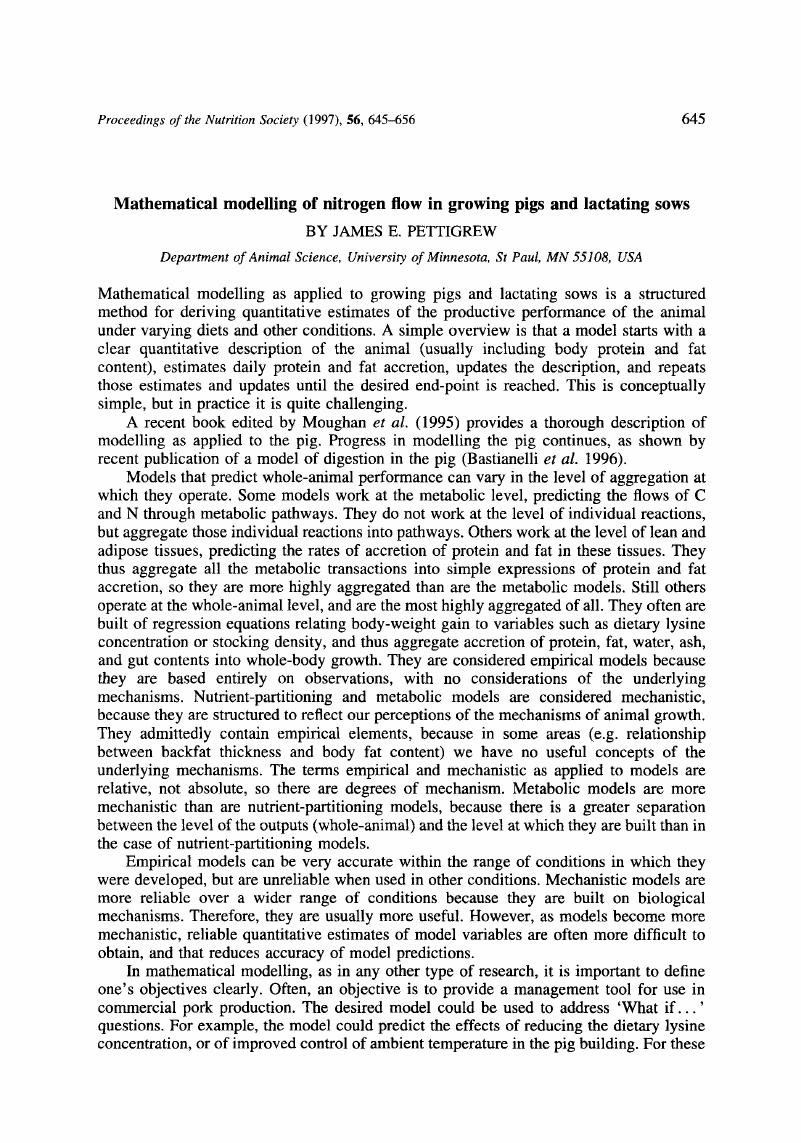Moughan, P. J. (
1995). Modelling protein metabolism in the pig—critical evaluation of a simple reference model. In
Modelling Growth in the Pig. European Association for Animal Production Publication no. 78, pp.
103–
112 [
Moughan, P. J.,
Verstegen, P. J. and
Visser-Reyneveld, M. I., editors].
Wageningen:
Wageningen Pers.
Google Scholar 